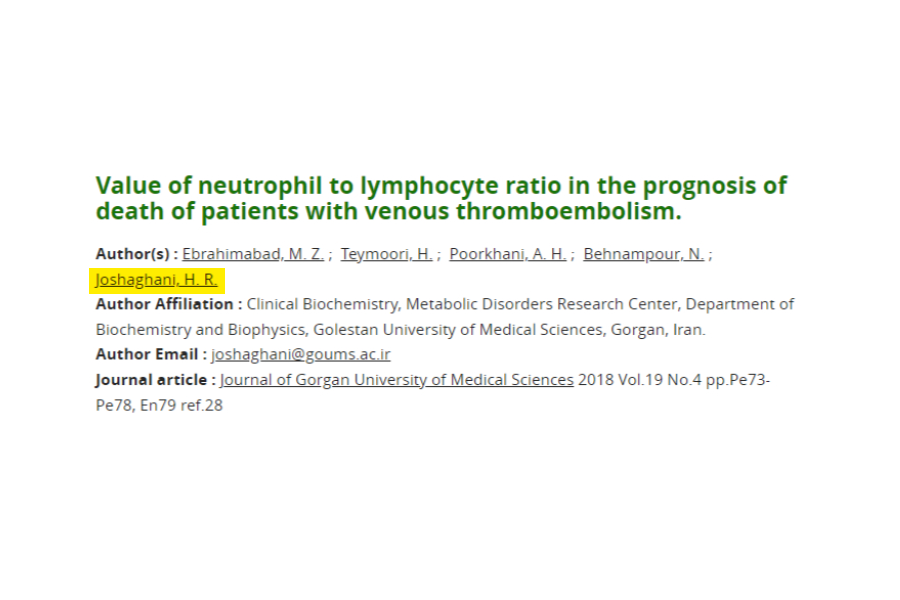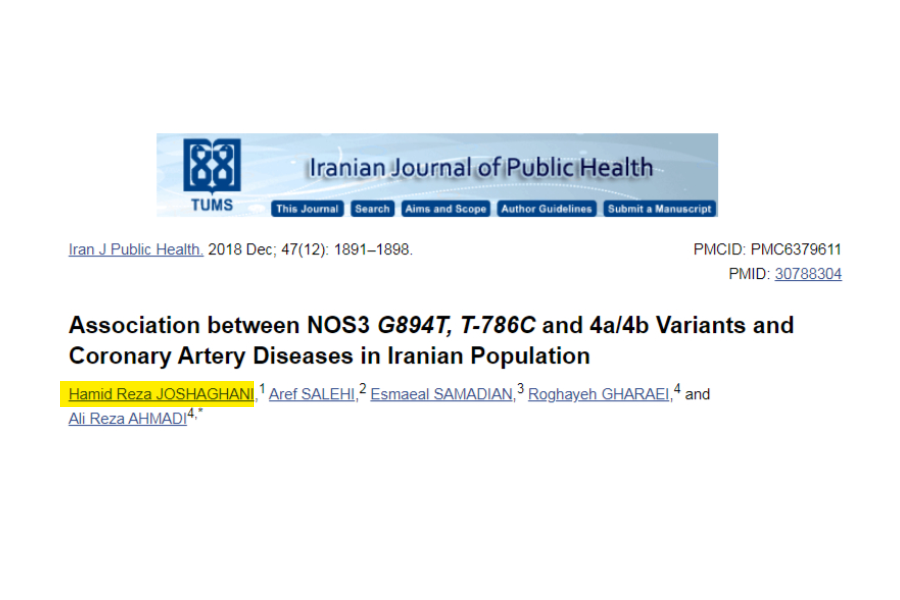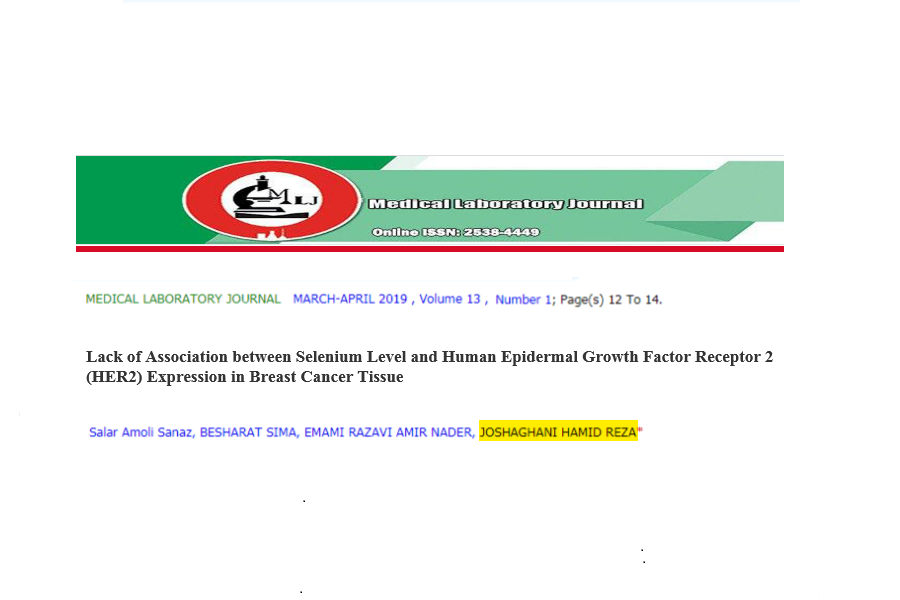ارزش نسبت نوتروفیل به لنفوسیت در پیش آگهی مرگ بیماران مبتلا به ترومبوآمبولیسم وریدی
Abstract:
Background and Objective: Venous thromboembolism (VTE) is a common clinical condition with a mortality rate of 15-20%. Neutrophil to lymphocyte ratio (NLR) is known as an indicator in predicting clinical outcomes in patients with various diseases and malignancies. This study was conducted to determine the value of neutrophil to lymphocyte ratio in the prognosis of death in patients with venous thromboembolism during the short term.
Methods: This retrospective cohort study was performed on 93 hospitalized patients with spontaneous venous thromboembolism in Gorgan, northern Iran during 2012-15. Demographic, blood and biochemical parameters of the patients were evaluated in the prediction of fatal outcome in a follow-up of 30 days after thrombose diagnosis.
Results: Sixteen patients (17.2%) died within 30 days. The variables of age, white blood cells, neutrophils, NLR, creatine kinase MB and lactate dehydrogenase significantly increased (P<0.05), and lymphocyte also platelet significantly reduced within the occurrence of death in a short period of 30 days follow up (P<0.05). A cut-off point of 7.21£NLR had sensitivity, specificity, positive and negative predictive value of 56.3%, 87%, 47.3% and 90.5%, respectively.
Conclusion: Neutrophil to lymphocyte ratio can be used as a useful biomarker in the prediction of mortality during short periods of time in VTE patients.




پاسخ دهید
میخواهید به بحث بپیوندید؟مشارکت رایگان.